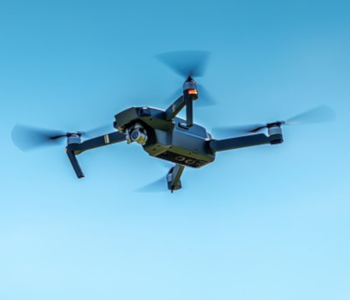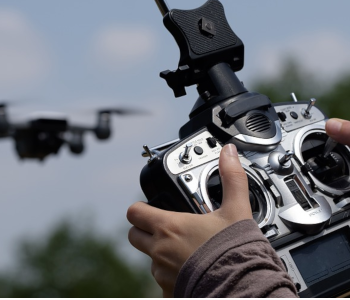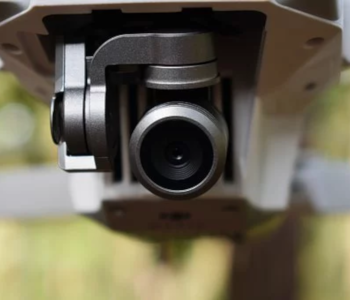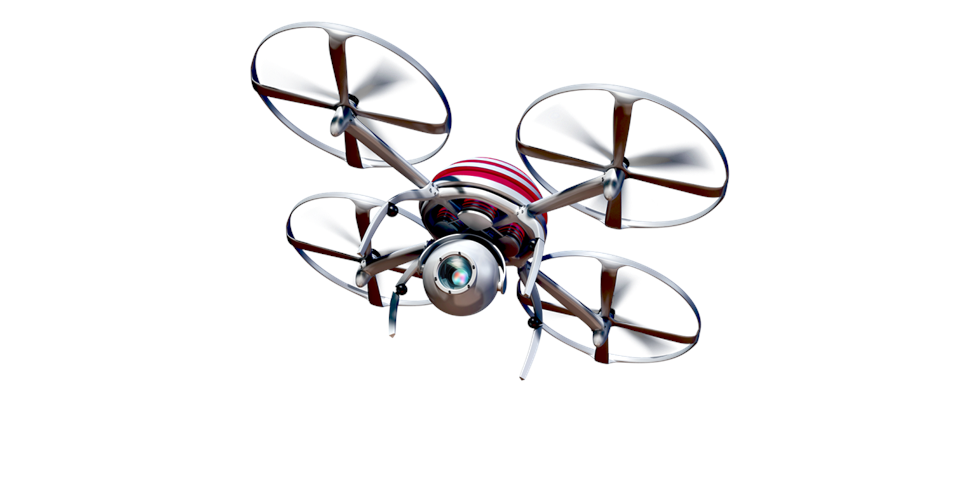How Do Drones Work – In-Depth Guide
You probably own a drone or are, perhaps, looking to buy one. The widespread use of social media, along with the rise of companies like DJI, has made drones very popular among professional photographers and hobbyists.
Drones are used in many activities besides photography. They are used to survey projects, study climate change, for defense purposes, and even for delivery of packages. Drones are quite user-friendly and can be flown by a teenager with little training. The more expensive drones have an interesting array of features.
Have you ever wondered what the technology behind these drones is? Have you ever thought about what laws of physics makes these drones fly so effortlessly in the air? In this article, we will look more closely at how drones work.
The physics
Take-off and land

You may have noticed that almost all drone models have rotating fans or rotors. The popular drone models have four rotors (quadcopter). These fans basically push air down below them. When the air gets pushed down, an equal and opposite force pushes the drone up. This phenomenon is called lift. The greater the speed of the rotors, the more lift gets generated.
Once the drone is in the air, it can do 3 things. The drone can either ascend further, it can hover in its place, or it can descend towards the ground. For the drone to ascend further up, it needs to have a force (thrust) greater than the gravitational pull exerted by the earth. Greater the weight of the drone, the greater the thrust needed to make the drone go up. This additional force can be generated by making the rotors spin faster.
Similarly, when the drone needs to descend, the net thrust or force generated by the rotors has to be less than the gravitational pull exerted by the earth. So, by reducing the speed of the rotors, the gravitational force can be used to bring the drone down.
For the drone to hover in its place, the thrust generated by the rotors simply needs to be the same as the gravitational pull exerted on it by the earth.
Rotation
In order to rotate the drone, the angular momentum of the drone has to change. Usually, out of the 4 rotors in a drone, 2 rotate in the clockwise direction while 2 rotate in the counterclockwise direction. The angular momentum of the drone is, therefore, zero as the 2 clockwise rotors cancel out the 2 counterclockwise rotors. However, if the speed of either set of rotors is changed, then the angular momentum changes and you get rotation. Two rotors have to reduce in speed while the other two have to increase their speed so that the thrust remains the same and the drone does not ascend or descend. Remember that for the drone to stay in place, it has to have a thrust equal to the gravitational pull.
Forward Backward
For the drone to move forward, you need the back two rotors to increase their speed and the front two rotors to decrease their speed. This will make the drone tilt forward while keeping the altitude of the drone constant. Since one of the rear rotors is clockwise and the other is anticlockwise, there is no change to the angular momentum of the drone.
Once the drone is tilted forward, an increase in the speed of all the rotors will produce a thrust which carries the drone forward. The same concept works for backward motion. The front rotors increase their speed while the rear rotors decrease their speed to make the drone tilt backward.
Sensors and controls

Controlling the drone
Controlling each of the 4 rotors individually will be a tedious and complex task. Therefore, computer-powered controllers can make life as easy as simply pushing a joystick button for you. The accelerometer and gyroscope sensors in the drone help to fine-tune the speeds of the rotors and stabilize the drone.
With a GPS, all the controls can be automatic and there is no need for a human controller. A GPS can actually store the aircraft’s take-off spot and map out the entire journey. Pinpointing the take-off spot can assist in its automatic return without any user intervention.
Navigational capabilities
Many drone models are also equipped with downward-facing cameras, side-facing cameras, and front-facing cameras. These cameras map the surroundings of the drone and help avoid obstacles. The cameras can also map the entire path or route for a drone to go from point A to point B without meeting any obstacles.
When the drone is in motion, these cameras along with the GPS can triangulate and self-correct the positioning of the drone in case it drifts too much.
There is another measuring instrument called the IMU (inertial measurement unit) which detects the rotational metrics such as pitch, yaw, and roll. The IMU helps to calibrate the drone and its orientation before a flight. The gyroscope together with the IMU provides core orientation information to the controller.
Landing of the drone
The downward-facing cameras are particularly helpful in the landing of the drone. They can pick out a spot that is safe enough to land. The downward-facing cameras also work in unison with ultrasonic sensors to communicate to the drone how far it is from the ground. With the camera and the ultrasonic sensor, the drone can land safely on uneven terrain.
Wireless communication
The drone communicates with the drone body via radio waves. These waves transmit at a frequency of 2.4 GHz. Some drones use 5.8 GHz as well. Drone controllers can either be a dedicated controller (looks like a gaming controller) or a smartphone. Some drone controllers use the Wi-Fi protocol to transmit signals on the 2.4 GHz spectrum.
Camera

The main camera of the drone can not only be used to capture photos and videos, but also to navigate the drone. The camera can provide FPV or first-person-view, a view which is the same as if the drone operator were on-board the drone itself.
Such a view allows the pilot to fly around obstacles and make the drone reach the most optimal locations. FPV also allows the drone to fly beyond the line-of-sight. It basically allows the drone pilot to easily operate the drone even when the drone cannot be physically seen by the pilot from his/her location. Flying indoors or around buildings is possible with FPV.
The feed from the camera of the drone is transmitted to the drone pilot via radio waves as discussed in the section above. The quality of the front camera on the drone determines how far ahead the drone pilot can see. The drone’s communication capabilities determine the range up to which live video feed can be transmitted from the drone to the pilot.
The camera is also normally attached to a gimbal which reduces the impact of vibrations and results in a smooth-looking video. A gimbal also enables the camera to tilt and create unique angles.
Flying Modes
Drones use the various sensors that are on-board to offer multiple flying modes. These flying modes use algorithms and data from cameras and sensors to provide the user with multiple functions. For example, users can make the drone follow a person, fly to a specific point which can be tapped on the screen, circle around a subject, recognize hand gestures of the person in the frame and perform functions accordingly, and so on.
Drones also have modes like S-mode (for sport) and P-mode (position). If you are new to flying drones, then you can opt for a beginner mode. A combination of hardware and software allows the drone to have such multiple functions.

